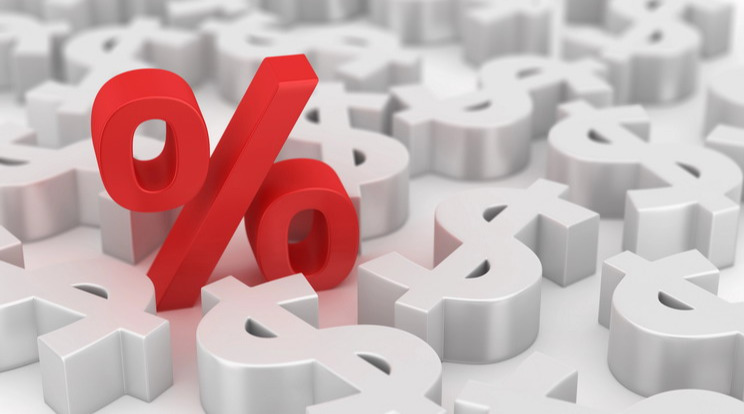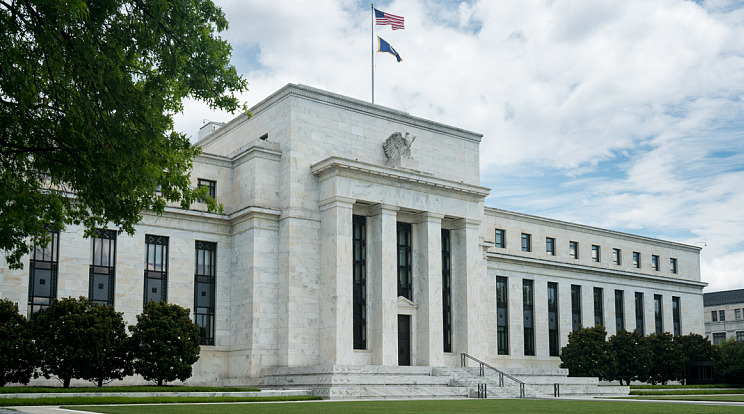15 Insights with Topic: 利率
While the market is focused on the size of the fiscal stimulus emerging from the Two Sessions currently underway in Beijing, there are other important drivers that could shape the outlook for the relative performance of Chinese equities versus US stocks. The first is about relative valuation; the second is cyclical – that is, the turning of the US economic cycle; and the third is secular – that is, the sustainability of the repeated use of the “policy bazooka” in the US. In this article, our Senior Advisor Say Boon Lim discusses what causes the underperformance of US market since the Inauguration of President Trump, and diversification out of the US equities has become more important than ever while the slump in consumer confidence and potential debt crisis continue to add downward pressures on the US economy.
Mar 09, 2025
US equities sentiment is now maximum bullish despite great policy uncertainties – altogether posing considerable risk to late-cycle momentum chasers. The US economy had barely cooled down before it was stimulated by 100 basis points in rate cuts in just three months from September 2024. The cuts started just when the US economy was rebounding. More importantly, they came after US inflation started picking up again. In fact, the US stock market is now in the grip of “Trumpian euphoria” because market expects the incoming administration will likely be supportive of even stronger growth, through more debt and deficits and extreme economic nationalism. The imminent risk now is that the US will have to pay more for its borrowings despite its dominance of the global debt market. This is not about other countries bypassing the Dollar in trade. It is about inflation – which will likely be worsened by President-elect Trump’s inflationary policies – and the term premia. In this article, our Senior Advisor Say Boon Lim discusses why US equities are in a bubble, drivers behind the Trumpian Euphoria 2.0, and that the stubborn or even revived inflation are credible risks in 2025.
Dec 24, 2024
The time has come – Federal Reserve chair Jerome Powell finally signalled that rate cuts will likely start in Sep at Jackson Hole, though his remarks offered few clues as to how the Fed might proceed after its Sep gathering. On the surface, extending duration in US Treasuries appears to be a straightforward decision given the assumption that falling interest rates will lead to rising bond prices. However, it is not without risks and complexity as we are entering the rate cut cycle against very different backdrop from previous cycles. In this article, we discuss the intricacies of the upcoming rate cut trajectory, and why US Treasury Floating Rate Notes (FRNs) remains a relevant strategy for investors seeking diversification and stability as a result of the very much inverted yield curve, and market uncertainties in this journey.
Aug 28, 2024
Global markets have hit extremes in sentiment – extreme exuberance towards the US and Japan and extreme pessimism about China. That sentiment has in part been driven by straight line projections of the cycle – the expectation that the US will continue its current path towards “Goldilocks” and Japan can sustain its currency depreciation-led earnings growth. The risks are that the cycle in the US transitions not to “Goldilocks” but to recession, and Japan’s Yen depreciation/reflation cycle cannot be sustained without dangerous inflation and ultimately government debt consequences. For China, the extreme in pessimism is predicated on the assumption that China cannot escape its cyclical weakness of the last 12 months, notwithstanding its ample policy “ammunition”.
Dec 18, 2023
Emerging ASEAN is one of the most compelling investment stories of 2024 – offering what is now an uncommon combination of growth and undervaluation. Having come to the end of its rate hiking cycle, with economic growth very much intact, Emerging ASEAN now benefits from tailwinds from a cyclical transition to stimulus amidst solid structural growth fundamentals. Vietnam in particular moved early and decisively in 2023 towards stimulus and its market is now favourably positioned with a PE to 2-year earnings CAGR ratio of only 0.36. In this article our Senior Advisor Say Boon Lim and Portfolio Manager Alex Chu discuss more about the fundamental growth drivers for this under-covered region, and how the end of the US rate hike cycle and the current valuation offer attractive opportunities for global and emerging markets allocators looking for uncorrelated alpha.
Dec 18, 2023
From “Goldilocks” to “Nightmare on Wall Street” – the convergence of structural and cyclical forces looks set to inflict a lot more damage on US assets. For some time now, we had been warning about the upside risks to US Treasury yields. That slow, upward creep in US Treasury yields recently turned into a rampage, with nasty implications for both US bonds and equities. Meanwhile structural factors are further feeding the rise in UST yields – more supply, less demand. In this article, our Senior Advisor Say Boon Lim discusses about the great refinancing pressure of US government debt looming, how a lot of stuff could “break” if funding costs keep going up – including US banks – and how things may play out if the structural factors are dominant, a cyclical economic downturn may not necessarily bring down funding costs.
Oct 19, 2023
Bloomberg reported that Chinese policymakers, led by the Ministry of Finance and the National Development and Reform Commission, are planning to launch a new round of stimulus, involving a potential issuance of at least RMB 1 trillion of additional China government bonds and an upward revision of fiscal budget deficit. Some investors may be worried about its negative impact on the bond market with the potential jump in supply. In this article, our Partner & Co-CIO David Lai discusses why we agree with most analysts that it would not create any lasting impact even if the plan materializes. In fact, China remains disciplined in fiscal policy whilst the overall monetary stance stays accommodative. China government bonds have outperformed almost all other sovereign bonds this year due to the rate cuts and low inflation expectations. The long end of China yield curve in particular benefited the most year-to-date, with the yields on 10-year, 30-year, and 50-year having fallen 13.8bps, 18.0bps, and 20.2bps respectively already.
Oct 19, 2023
The US Treasury’s recent – and ongoing – dash for cash highlights the economy’s enormous fiscal challenges. To quote Bloomberg: “The barrage of fresh Treasury bills poised to hit the market over the next few months is merely a prelude of what’s yet to come: a wave of longer-term debt sales that’s seen driving bond yields even higher. Sales of government notes and bonds are set to begin rising in August, with net new issuance estimated to top USD 1 trillion in 2023 and nearly double next year to fund a widening deficit.” On top of that, according to calculations by asset manager Horizon Kinetics and as quoted by gold fund manager Incrementum, the US will have to refinance around half of its national debt of more than USD 35 trillion by 2025. That’s a lot of debt maturities to digest in two years. In this article, our Senior Advisor Say Boon Lim cautions that even if Fed rates stabilise, the longer-term outlook for US Treasury yields would likely remain risky as persistent deficits drive up debt relative to GDP, in turn driving interest payments as a percentage of GDP up “vertically”. Indeed, the Congressional Budget Office is warning of the “risk of a fiscal crisis”.
Jul 24, 2023
As China’s post reopening recovery has taken a slower pace than the high hopes of the markets, there have been concerns that China’s economic growth will be lower for longer resembling Japan’s "Lost Decade". However it is important to note China and its people do have a solid track record of resilience, and there are several structural features of China that differentiates it from other emerging markets or Japan in its growth trajectory. In this article, our Senior Advisor Say Boon Lim shares 12 interesting charts to review in the context of China’s relatively high economic resilience (as measured by the Swiss Re Institute’s Resilience Index), comparing with MSCI Emerging Markets ex-China’s key constituents namely India, Brazil, South Korea, Taiwan, and Saudi Arabia. Economic resilience being a product a policy stability and prudence, are pointing to an undervalued opportunity in Chinese equities and the appeal of Chinese government bonds for its stable yield at a time when other countries’ government rates and bond yields are surging.
Jul 03, 2023
Some traders borrow the expression “the postman always rings twice” from the title of that 1981 movie. It is to make the point that markets often give investors a few opportunities to get in or get out. We believe the first time the “postman” rang already for a downtrend when the S&P 500 hit an intra-day high of 4195 in early February but it failed to sustain above the 50.0% Fibonacci retracement of the decline from January 2022 to October 2022. In this article, our Senior Advisor Say Boon Lim discusses the valuations and earning forecasts for US markets, and the “postman” may just have rung a second time when the S&P 500 was once again testing its 78.6% Fibonacci retracement resistance.
Apr 13, 2023
Banking failures in the US, the recent epic takeover of Credit Suisse and the wipe out of its AT1, speak volumes about the stage of the cycle in Developed Markets. In particular, they warn against underestimating the risks at this stage of the asset and economic cycles. The Fed now risks a return to 1970-1985 if it loses its nerve on rates, and it is going into battle with very little – rates are lower than at previous cyclical bottoms and inflation is higher. In this article, our Senior Advisor Say Boon Lim shares his reflections on the US cycle, inflations, rates and asset markets, and while US asset market outlook is worrying, why China is increasingly becoming a safe haven trade for investors.
Mar 20, 2023
China markets witnessed strong rally since Oct 2022 trough upon China reopening and covid policy pivot, and we start to see investor flows rotating from offshore to A-shares which are expected to outperform with a longer run for rally. Where are we in China’s reopening trajectory? Who are the policy supported sector leaders well placed to outperform? These are the common questions frequently asked by our clients. In this article, we discuss the 10 most frequently asked questions that came up in our recent conversations with investors and allocators, and share more color about pockets of opportunities as China reopening evolves into the second act for economic growth recovery.
Mar 17, 2023
Big, long-term trends could drive Developed Market bond yields much higher than the cyclical peaks that the market is currently pricing in. There are cycles and there are secular trends. If the super cycle of rates and yields has turned – off deep negative inflation-adjusted levels – then the lesser cycles could mean- revert a lot higher around long-term uptrends. And we are at this juncture at the moment, as the negative yielding bonds have literally disappeared - the global stock of negative yielding bonds had gone from a peak of US$18.4 trillion late in 2020 to zero recently. What are the true implications behind this abrupt turn of tides? In this article, our Senior Advisor Say Boon Lim discusses the big drivers for potentially much higher rates and yields for this year, and areas we are spending a lot more time monitoring, as the longer-term outlook could be far worse than just a mean reversion in nominal rates and yields as we may also be in the midst of a secular mean reversion in real government bond yields and corporate credit yields.
Jan 17, 2023
In a discordant world, there are no overarching investment themes. The different parts of the world are marching to different drums – their economies and markets are driven by different cycles, different prior policy choices and factors beyond their control. The US economy and market are paying back for the extreme policy stimulus of 2020-2021. Europeans are paying back for the same, with the added pain of a war outside their control. Japan is battling a chronic ailment – extreme debt – made acute by sharply higher cost of US funds. China is at the bottom of its policy cycle, at the beginning of a path out of COVID health controls.
Dec 05, 2022
Yield curve steepening – which has been accelerating in recent weeks as the market contemplates a whopper of a stimulus package under a possible Biden White House – is likely to continue regardless of the winner on November 3.
Oct 14, 2020















